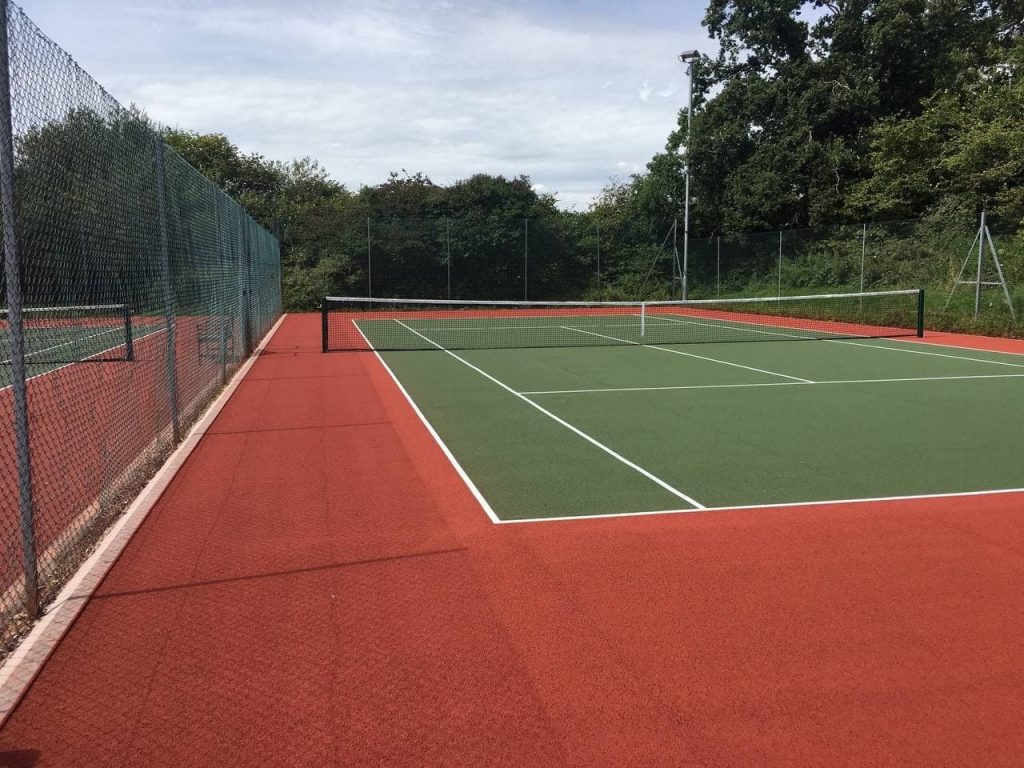Introduction
As tennis courts age, they inevitably begin to show signs of wear—cracks, faded markings, drainage problems, and uneven surfaces. These issues not only affect playability but can also present safety risks if left unaddressed. For court owners, the key decision often comes down to whether to resurface or fully rebuild. Each option offers distinct advantages depending on the court’s condition and long-term goals.
At Tennis Court Construction Sussex, we work with clients across Sussex, UK to evaluate the best solution for their needs. In this article, we explore the differences between resurfacing and rebuilding, helping you make an informed decision for your ageing court.
Understanding the Difference Between Resurfacing and Rebuilding
What Does Resurfacing Involve?
Resurfacing is a cost-effective way to restore the playing surface without altering the court’s foundation. The process includes cleaning, crack repair, the application of new acrylic layers, and line marking. It’s suitable for courts that are structurally sound but suffering from cosmetic or surface-level deterioration.
This method is ideal for:
- Minor cracks and surface wear
- Fading or loss of grip
- Slight pooling that doesn’t indicate foundational issues
- Courts under 15 years old that have been well maintained
What Does Rebuilding Involve?
Rebuilding is a complete reconstruction. It requires removing the existing surface and base layers, correcting foundational issues, improving drainage, and installing a new court surface from scratch. While more expensive, rebuilding ensures long-term performance, especially for courts with extensive structural damage.
Rebuilding is typically necessary when:
- Cracks are wide or recurring despite prior repairs
- There’s clear evidence of base erosion or sinking
- Water consistently pools in multiple areas after rain
- The court is over 20 years old with little maintenance history
- Surface irregularities are affecting gameplay or player safety
Benefits of Each Approach
Advantages of Resurfacing
- Significantly less costly than rebuilding
- Faster turnaround time—usually just a few days
- Fresh appearance with vibrant new lines and colours
- Restores grip and surface consistency for better play
- Environmentally friendly, using less material and waste
Advantages of Rebuilding
- Solves long-standing structural problems
- Improves drainage and overall performance
- Ensures consistent ball bounce and court flatness
- Offers the opportunity to upgrade court type or features
- Long-term value with a lifespan of 20 to 30 years if maintained properly
How to Decide: Key Considerations
When choosing between resurfacing and rebuilding, it’s important to evaluate the following:
- Age of the court: Older courts often have deep-rooted problems that resurfacing cannot address.
- Frequency of use: High-traffic courts may require a full rebuild for better durability.
- Type of surface: Some surface types wear faster or may be incompatible with modern resurfacing materials.
- Budget: Resurfacing is more budget-friendly short-term; rebuilding offers greater value over time.
- Future plans: If you’re considering enhancements like lighting, fencing or court expansion, a rebuild might be the more strategic choice.
Conclusion
Deciding between resurfacing and rebuilding an ageing tennis court depends on a range of factors including surface condition, age, usage, and long-term goals. Resurfacing is ideal for courts with surface wear and minor imperfections, while rebuilding offers a lasting solution for those with serious structural issues.
At Tennis Court Construction Sussex, we help clients across Sussex, UK assess their court’s condition with precision and honesty. Whether you’re looking for a surface refresh or a complete rebuild, our expert team will guide you to the most effective and cost-efficient solution. Get in touch today to schedule a site assessment and take the next step towards a safer, high-performance tennis court.
Call us on: 01892 351125
Click here to find out more about Tennis Court Construction Sussex
Click here to complete our contact form and see how we can help with your courts needs.
